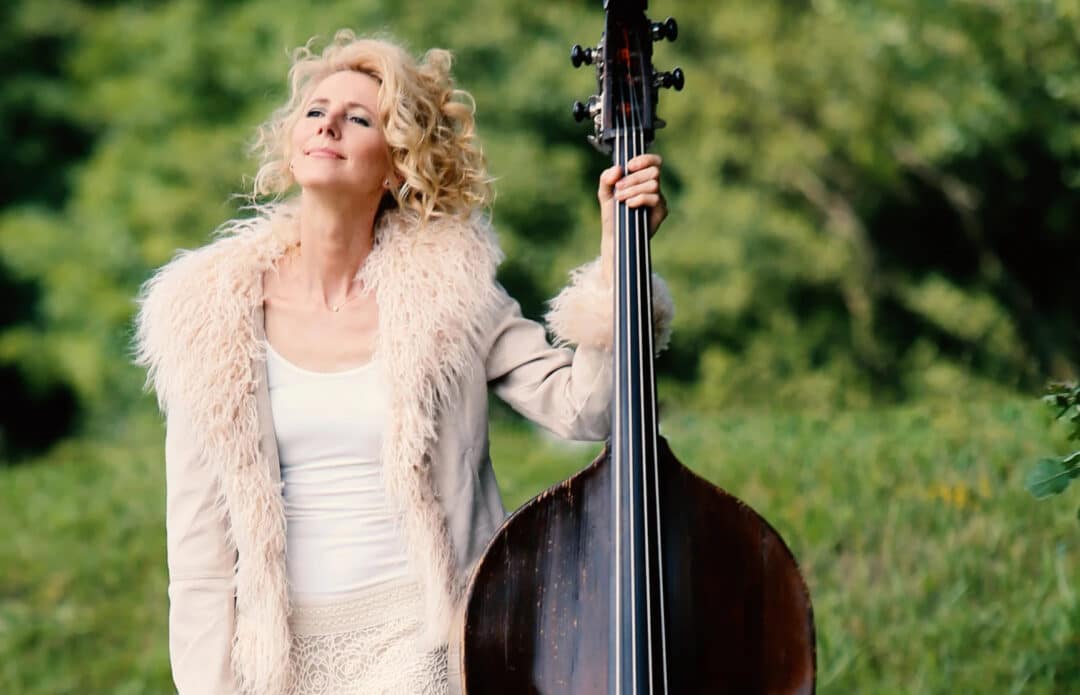
It’s no exaggeration to say that the Austrian jazz scene is experiencing something of a renaissance. Proof, if it were needed, can be found in the keen international interest in jazz from Austria, regardless of style. New generations of musicians are following in the footsteps of jazz greats like Joe Zawinul and Karl Ratzer, musicians with their own ideas about music and society (many of them are socially active). In honor of the annual UNESCO International Jazz Day, we take a quick look at the past, present and future of Austrian jazz.
If there’s one thing that characterizes the Austrian jazz scene, it’s musical diversity. From Afro-jazz and Eastern sounds to classical crossover projects, from “mainstream” jazz to bombastic free jazz, to electronic and ambient takes on the genre – if there’s improvisation and the will to self-expression, someone is doing it in the Alpine republic. First, a look at where we came from…
The 70s and 80s: GENERATION V.A.O.
The Vienna Art Orchestra was founded by Mathias Rüegg in 1977 and for the next three decades, the innovative big band was one of the prime movers in Austrian jazz. V.A.O. alumni, including saxophonists Wolfgang Puschnig and Harry Sokal, trumpeter Thomas Gansch, and bassist Georg Breinschmid, are counted today among the “elders” of the Austrian scene. But the band wasn’t the only source of new jazz at the time; the 70s and 80s also produced internationally successful artists like guitarist Wolfgang Muthspiel, free-jazz trumpeter Franz Hautzinger, saxophonist and composer Max Nagl, drummer Wolfgang Reisinger and more. With the exception of Reisinger, who passed away unexpectedly in 2022, all are still active and collaborating with the younger generations of musicians who have followed.
A few women also managed to make inroads into what was – it has to be said – overwhelmingly a men’s club at the time; one prominent example is bassist Gina Schwarz, who has since gone on to lead a number of projects with younger musicians and is now a professor of double bass at the music university in Vienna.

The 2000s: THE JAZZWERKSTATT WIEN
A seismic shift in Austrian jazz took place in 2004 with the founding of the JazzWerkstatt Wien. Its founders – Daniel Riegler, Peter Rom, Clemens Salesny, Bernd Satzinger, Wolfgang Schiftner, and Clemens Wenger – were frustrated at their difficulty in finding venues to develop and present their new ideas and ensembles, so they decided to do it themselves. In 2005, the first JazzWerkstatt Wien festival took place, a month-long extravaganza featuring two to three acts per nigh, involving scores of musicians. If jazz in Austria had become largely a domain of individuals working toward their own ends, the JazzWerkstatt reawakened the collective idea – and it bore fruit: numerous bands and ensembles like Studio Dan, Fuzz Noir, and the Synesthetic 4 arose out of the JazzWerkstatt circle, and many of them are still active today. In addition, the Vienna collective inspired a number of similar initiatives, including similar groups in Graz and Bern, Switzerland.
The JazzWerkstatt Wien was also a pioneer in the wave of indie labels founded just as the major labels lost interest in developing artists and mid-size labels were being swallowed up: JazzWerkstatt Records was founded in 2005, followed by labels like Christoph Pepe Auer’s Session Work Records, Alessa Records, Tonart Tirol, and Fraufeld.
The 2010s: CRYSTALLIZATION AND COMING OF AGE
In subsequent years, the movement started by the JazzWerkstatt coalesced as the musicians that had gotten their start at the first musical bacchanalia became more established, and younger musicians looked to their example. It was in this decade that many of Austria’s most successful international acts made their debut or matured: bands like Lukas Kranzelbinder’s Shake Stew, Mario Rom’s Interzone, Kompost3 and 5K HD, chuffDRONE, the Sketchbook Quartet and Klio are all representing Austrian jazz throughout Europe and beyond.
Solo artists and bandleaders with a unique vision have also played a major role since the 2010s –Georg Vogel, David Helbock, Martin Listabarth, Sophie Abraham, Golnar Shahyar, Lukas König, Judith Ferstl, Astrid and Beate Wiesinger, Valentin Duit, and Martin Eberle are only a few of the names that have been resonating well beyond the borders of Austria in the last decade or so.
Jazz CLUBS AND FESTIVALS
Not to be outdone by its larger neighbors, Austria is home to a surprising number of internationally known clubs and festivals that focus at least partly on jazz. Vienna’s Porgy & Bess is both an incubator for domestic acts and a mandatory stop for international artists touring in Mitteleuropa; venues like JazziT in Salzburg, Stockwerk Graz, Innsbruck’s Treibhaus and the Spielboden in Dornbirn also play host to international acts (and local acts set to go international) on a regular basis. The Jazzfestival Saalfelden is one of the giants among the European jazz festivals, smaller but no less worthy of note are Vienna’s Kick Jazz and Konfrontationen in Nickelsdorf.
The borders between jazz and…well, everything else – have become increasingly porous in the last decade or so. This is true internationally, of course, but Austria – the bridge between Eastern and Western Europe and home to an increasingly diverse population – is at the forefront of the trend. The pandemic and its effects on the music business haven’t made things easier, but the resurgence of bands, releases, concerts, and festivals in the last year or so is more than proof enough that the scene is alive, fruitful, and sustaining the tradition of jazz in a uniquely Austrian way.
As we celebrate International Jazz Day, it is vital to remember that jazz as an art form has always been devoted to diversity, self-determination, and freedom of expression. However, it is also an intensely social, communicative practice – and as such, like all the best art, it serves as a microcosm and a model for a more open, inclusive, and self-aware society.
Michael Ternai & Philip Yaeger
